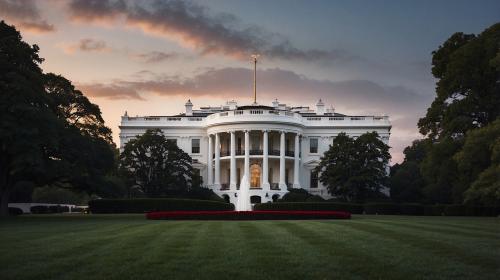This op-ed was originally featured in the LA Times on May 29, 2019.
America’s annual “infrastructure week” — dedicated to motivating policymakers to address the decaying of our roads, bridges and rails — ended last week with President Trump storming out of a meeting with congressional leaders. Before the negotiations had even begun, the president told the Democrats in the room he’d discuss infrastructure only after Congress ended “these phony investigations.” This stands in sharp contrast to how President Clinton dealt with the same issues 20 years ago.
In the summer of 1998, Clinton worked across the aisle with then-House Speaker Newt Gingrich to enact major infrastructure legislation. That occurred despite the House pressing an investigation led by special counsel Ken Starr that started with a real estate deal known as Whitewater and ended with the Republican House impeaching Clinton six months after the infrastructure bill was passed. Twenty years later, those infrastructure investments continue to benefit Americans, and the scandal is history.
The Clinton-Gingrich deal is instructive. It shows how politicians who go for each other’s throats can still compromise — and what it might take to make infrastructure week meaningful instead of serving as a punchline for Washington’s inability to make progress on the most bipartisan of problems.
The deal included nearly $200 billion in funding for surface transportation. However, that funding wasn’t enough to address all of the challenges, so it included innovative ways to leverage federal money with private-sector capital — creating the Transportation Infrastructure Finance and Innovation Act (TIFIA), used to finance 74 projects including L.A. Metro’s Crenshaw line. It also included many congressional earmarks to address specific projects and politics that cannot be solved through funding formula changes.
The process wasn’t pretty but the results were, resulting in six years of stable, increased funding for our nation’s roads, bridges and transit systems.
The outlines for a similar deal are in place today. The gas tax remains at 18.4 cents, the same as it was in 1998. But back then gas was pushing $1 a gallon. If the gas tax today were the same share of the cost of gas as it was in 1998, the tax would be around 52 cents. This would cover most of the new funding needed for a big surface transportation bill.
This is an important point because false arguments against the viability of the gas tax are common. Yes, electric vehicles don’t pay the tax. But there are not enough all-electric vehicles to make an impact. More Dodge Caravan minivans were sold last year (nearly 152,000) than all electric vehicles combined, excluding the Tesla 3 (whose sales versus delivered figures in 2018 are difficult to parse). Average fuel efficiency across all new cars sold is rising, but extremely slowly: just one-tenth of a mile a gallon, to 24.7 mpg in 2016. But the average age of a car on the road is 10 years old, while pickup trucks are 13.
Major shifts in transportation may be coming over the next several decades, but Americans are driving more than ever. As a whole, they drove 23% more miles in 2018 than 1998.
Contrary to popular opinion, millennials are not giving up cars or adopting alternative transportation lifestyles. Driving fell from 2008 through 2010 not because of a change of preferences, but because unemployment rose to 10 percent. As jobs came back, people returned to the roads. In a 2018 study on millennial habits, Federal Reserve economist Chris Kurtz found millennials are buying cars at the same rate as previous generations.
A decades-old infrastructure deal cannot solve transportation problems forever. But it can work for the next six to 10 years — the gas tax will remain a viable funding method for surface transportation for that window, if not longer.
The federal government needs to incorporate more private capital to fund infrastructure projects. The TIFIA program created in 1998 can easily be expanded and increased to allow 10 times as many projects to be funded. After all, every municipal bond is funded with private capital.
The answers are there if politicians are willing to work together. President Clinton had the courage to work directly with those who investigated and ultimately impeached him. Voters rewarded Clinton in the 1998 midterms partly because of that. If President Clinton could work with Speaker Gingrich while Gingrich was working to impeach him, why can’t President Trump work with Speaker Nancy Pelosi now?
If President Clinton could work with Speaker Gingrich while Gingrich was working to impeach him, why can’t President Trump work with Speaker Nancy Pelosi now?
Trump has talked a good game about infrastructure since his campaign, but it has taken an exceedingly public backseat in his administration. Of all things, infrastructure has become an internet meme, a way to poke fun at Trump’s inability to stay on message.
The Republican Congress showed zero interest in his original infrastructure proposal, refusing to even introduce his idea as legislation, let alone vote on it. Trump’s signature legislative accomplishment — slashing corporate tax rates — will actually make infrastructure more expensive by raising costs for state and local governments to finance projects.
The president’s chief of staff, Mick Mulvaney, has repeatedly thrown shade on infrastructure talks, leading the president to publicly criticize his own chief. One wonders whether the crew is listening to the captain and whether the captain will ever be able to handle turbulence.
The Brookings Institution is committed to quality, independence, and impact.
We are supported by a diverse array of funders. In line with our values and policies, each Brookings publication represents the sole views of its author(s).






Commentary
Op-edBill Clinton cut infrastructure deals while under investigation. Why can’t Trump?
May 30, 2019